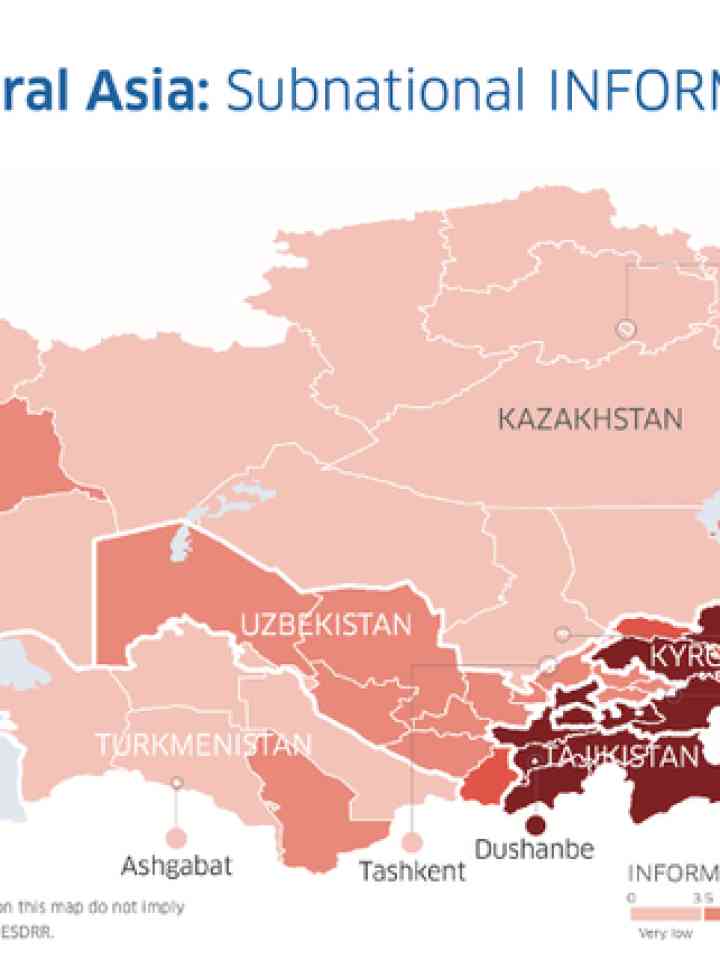The subnational INFORM models identify areas at a high risk of a humanitarian crisis that is more likely to require international assistance, based on risk concepts published in scientific literature. It envisages three dimensions of risk: Hazards & Exposure, Vulnerability, and Lack of Coping Capacity. It is split into different levels to provide a quick overview of the underlying factors leading to humanitarian risk.
Two models have been developed in the Europe and Central Asia region:
- The subnational INFORM model for the Caucasus and Central Asia, which UNDRR updated in collaboration with the Center for Emergency Situations and Disaster Risk Reduction for Central Asia (CESDRR) in 2021.
- The subnational INFORM model for South East Europe (including Albania, Montenegro, and North Macedonia) which UNDRR developed in collaboration with the Secretariat of Disaster Preparedness and Prevention Initiative for South East Europe (DPPI SEE) in 2021.
Partners hope to use the model to improve cooperation between humanitarian and development actors in managing risk and building resilience across the region. It will be helpful for an objective allocation of resources for disaster management as well as for coordinated actions focused on anticipating, mitigating, and preparing for humanitarian emergencies.
The tool can assist the private sector to be better informed for cooperating with humanitarian and development actors in managing risk and building resilience. The private sector has skills and competencies that can positively benefit the efforts of the humanitarian community. Moreover, their knowledge and links with local communities are also a great asset for the greater effectiveness of humanitarian action.
Explore further
